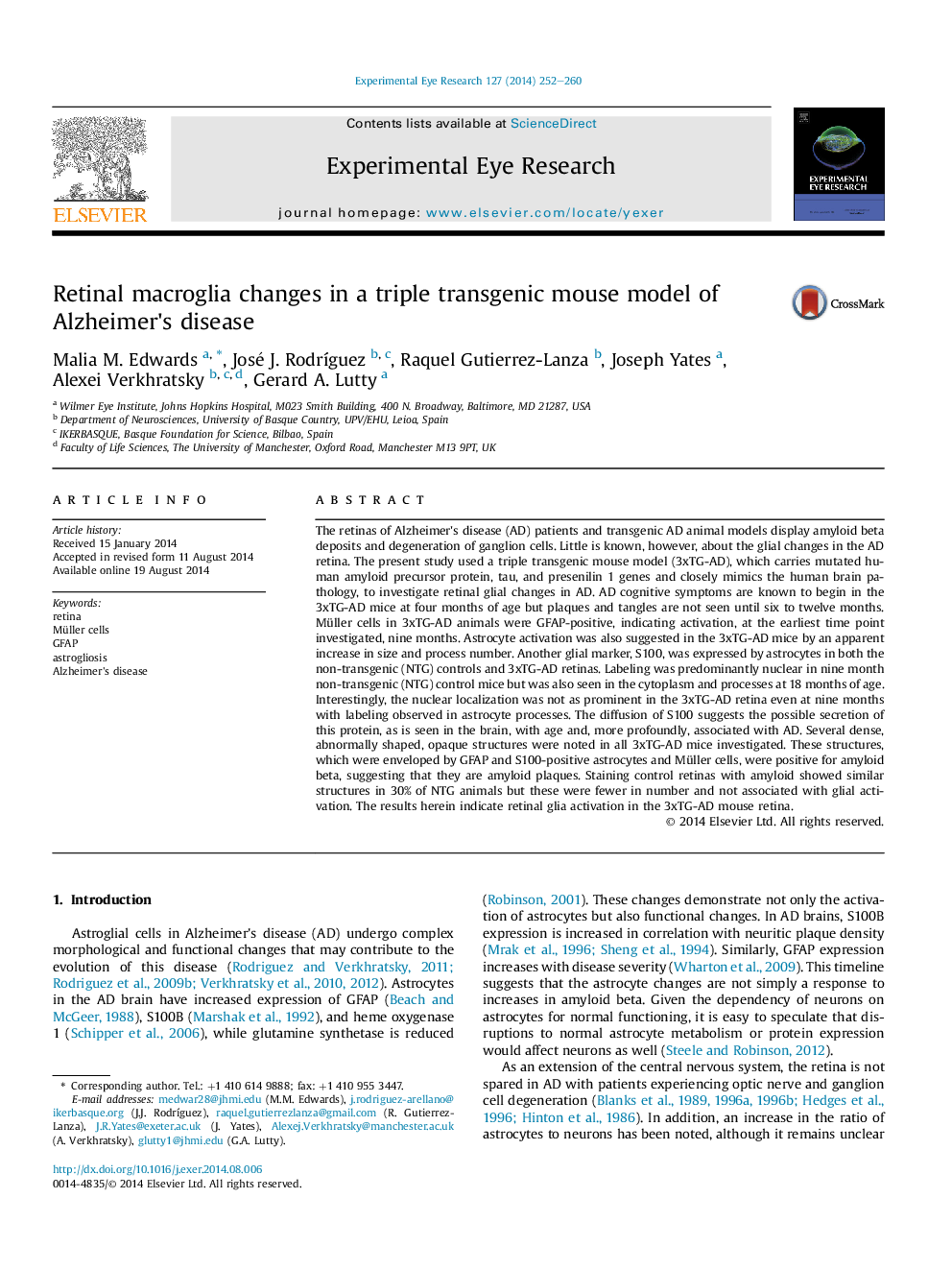| کد مقاله | کد نشریه | سال انتشار | مقاله انگلیسی | نسخه تمام متن |
|---|---|---|---|---|
| 6196824 | 1602595 | 2014 | 9 صفحه PDF | دانلود رایگان |
- Müller cells and astrocytes are activated by 9 months of age in 3xTG-AD retinas.
- Dense, amyloid positive structures are observed in all 3xTG-AD retinas.
- Müller cells and astrocytes ensheath the amyloid structures in the 3xTG-AD retinas.
The retinas of Alzheimer's disease (AD) patients and transgenic AD animal models display amyloid beta deposits and degeneration of ganglion cells. Little is known, however, about the glial changes in the AD retina. The present study used a triple transgenic mouse model (3xTG-AD), which carries mutated human amyloid precursor protein, tau, and presenilin 1 genes and closely mimics the human brain pathology, to investigate retinal glial changes in AD. AD cognitive symptoms are known to begin in the 3xTG-AD mice at four months of age but plaques and tangles are not seen until six to twelve months. Müller cells in 3xTG-AD animals were GFAP-positive, indicating activation, at the earliest time point investigated, nine months. Astrocyte activation was also suggested in the 3xTG-AD mice by an apparent increase in size and process number. Another glial marker, S100, was expressed by astrocytes in both the non-transgenic (NTG) controls and 3xTG-AD retinas. Labeling was predominantly nuclear in nine month non-transgenic (NTG) control mice but was also seen in the cytoplasm and processes at 18 months of age. Interestingly, the nuclear localization was not as prominent in the 3xTG-AD retina even at nine months with labeling observed in astrocyte processes. The diffusion of S100 suggests the possible secretion of this protein, as is seen in the brain, with age and, more profoundly, associated with AD. Several dense, abnormally shaped, opaque structures were noted in all 3xTG-AD mice investigated. These structures, which were enveloped by GFAP and S100-positive astrocytes and Müller cells, were positive for amyloid beta, suggesting that they are amyloid plaques. Staining control retinas with amyloid showed similar structures in 30% of NTG animals but these were fewer in number and not associated with glial activation. The results herein indicate retinal glia activation in the 3xTG-AD mouse retina.
Journal: Experimental Eye Research - Volume 127, October 2014, Pages 252-260
